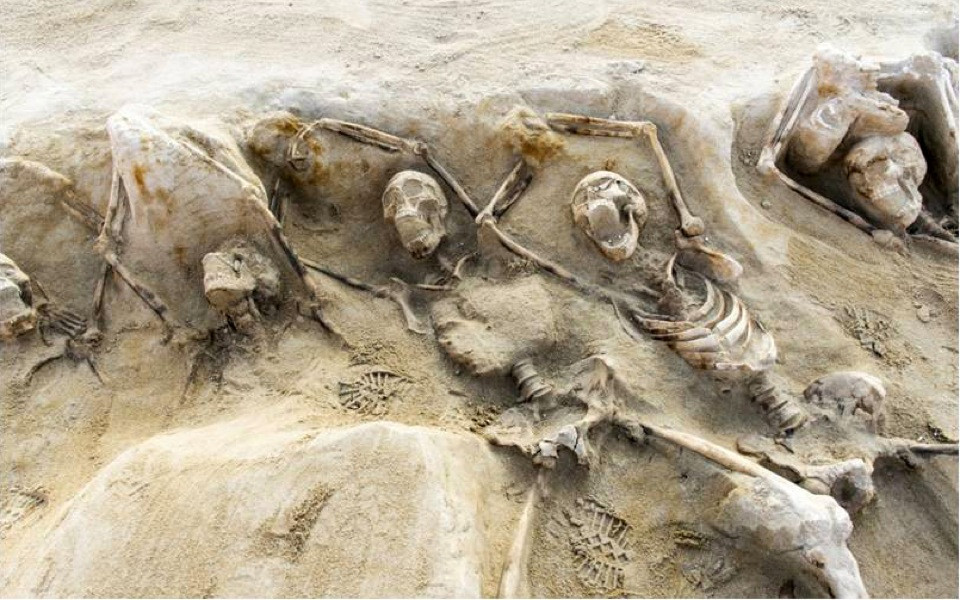In the sun-scorched landscape of Himera, a once-thriving ancient city on the northern coast of Sicily, a discovery of monumental significance has emerged from the soil. During a modern railway construction project, workers stumbled upon a mass grave, untouched for over two millennia. What they unearthed has not only fascinated the archaeological community but also fundamentally challenged long-standing beliefs about ancient Greek warfare. For centuries, the tale of the Battle of Himera in 480 B.C. has been presented through the lens of valorous Greek citizen-soldiers defending their city against Carthaginian invaders. Yet, thanks to cutting-edge DNA and isotopic analysis, this narrative has been turned on its head, revealing a far more complex and globally connected world than previously imagined.

The traditional understanding of the Battle of Himera positioned it as a pivotal conflict in which ordinary Greek citizens rose in unity to protect their homeland from a powerful enemy. Historical texts have long echoed this image of civic duty and patriotism. However, scientific examination of the skeletal remains in the mass grave paints a dramatically different picture. Genetic data extracted from the bones reveals that many of these individuals did not originate from Sicily—or even Greece. Instead, they hailed from distant regions, stretching from the steppes of present-day Ukraine to the forests of Latvia and the mountains of Bulgaria. This startling evidence points to a military force composed in large part of foreign mercenaries, warriors who traveled vast distances to fight and ultimately die in a land far from home.
Consider the implications: a man born thousands of miles to the northeast, in what is now Eastern Europe, undertakes a perilous journey across land and sea to serve in a conflict he likely had no personal stake in. Such a reality dispels the romanticized notion of homogenous Greek armies and instead highlights the widespread and strategic use of hired soldiers—individuals who brought diverse skills and experiences to the battlefield. These findings underscore that mercenaries were not marginal participants but central figures in the military operations of the time.
In the politically volatile environment of ancient Sicily, power was often concentrated in the hands of tyrants—rulers who seized control and governed through a combination of shrewd diplomacy and force. These leaders understood the utility of mercenary forces, employing them not only for expansionist campaigns but also as personal protectors. To facilitate this growing dependence on professional soldiers, the cities of Sicily began minting coins, an innovation that allowed for the consistent payment of troops from various regions. The adoption of coinage, in part spurred by the needs of military finance, represents yet another way in which warfare influenced broader societal development.
Archaeologists and scientists applied a combination of genomic sequencing and chemical isotope analysis to study the remains. Isotopic signatures in bones can reveal where a person spent their early years, offering clues to geographic origin. Together with DNA data, researchers could map out the diverse backgrounds of those buried in Himera’s west necropolis. Interestingly, the graves lacked traditional weaponry or armor, likely scavenged by survivors in the aftermath of battle. However, skeletal trauma—deep cuts, broken bones, and evidence of brutal violence—left no doubt about the cause of death. These were warriors, casualties of a ferocious and deadly engagement.
What adds further intrigue to the discovery is the difference in burial customs between these foreign mercenaries and the native Greek soldiers. The mercenaries were buried in separate mass graves, with simple arrangements indicating respect but little ceremony. In contrast, Greek soldiers were afforded more elaborate burials, with care given to body positioning and the inclusion of grave goods. Even in death, a hierarchy persisted—reflecting social divisions that extended beyond life. These nuances in burial treatment shed light on the values and norms of the time, revealing a society deeply conscious of status and origin.
This finding from Himera has had profound implications for how we interpret ancient military history. The long-cherished idea of the citizen-soldier—the free man who fought out of loyalty to his polis—must now be tempered by the reality that many battles were fought and won with the aid of foreign professionals. These mercenaries, often overlooked in traditional historical accounts, played a decisive role in shaping the ancient Mediterranean world. Their presence signifies a level of international interaction and cultural exchange that many may not associate with antiquity.
Moreover, this groundbreaking research highlights the power of interdisciplinary collaboration in uncovering the truth about the past. Historical texts provide narratives, but they are often written by victors or filtered through cultural biases. Archaeology, bioarchaeology, and advanced scientific techniques like DNA and isotope analysis offer a more objective lens, capable of challenging and refining these stories. The integration of multiple forms of evidence enables us to reconstruct history with greater accuracy and nuance.
As we continue to unearth the secrets buried beneath our feet, the story of Himera serves as a powerful reminder that the past is rarely as simple as it seems. The real history of ancient warfare, like the soldiers who lived and died in it, is complex, multifaceted, and often surprising. Discoveries like these compel us to reexamine what we think we know and embrace the possibility that history still holds many untold truths. With each new excavation and every scientific breakthrough, we take another step closer to understanding the intricate tapestry of human civilization—its conflicts, its alliances, and its enduring mysteries.





